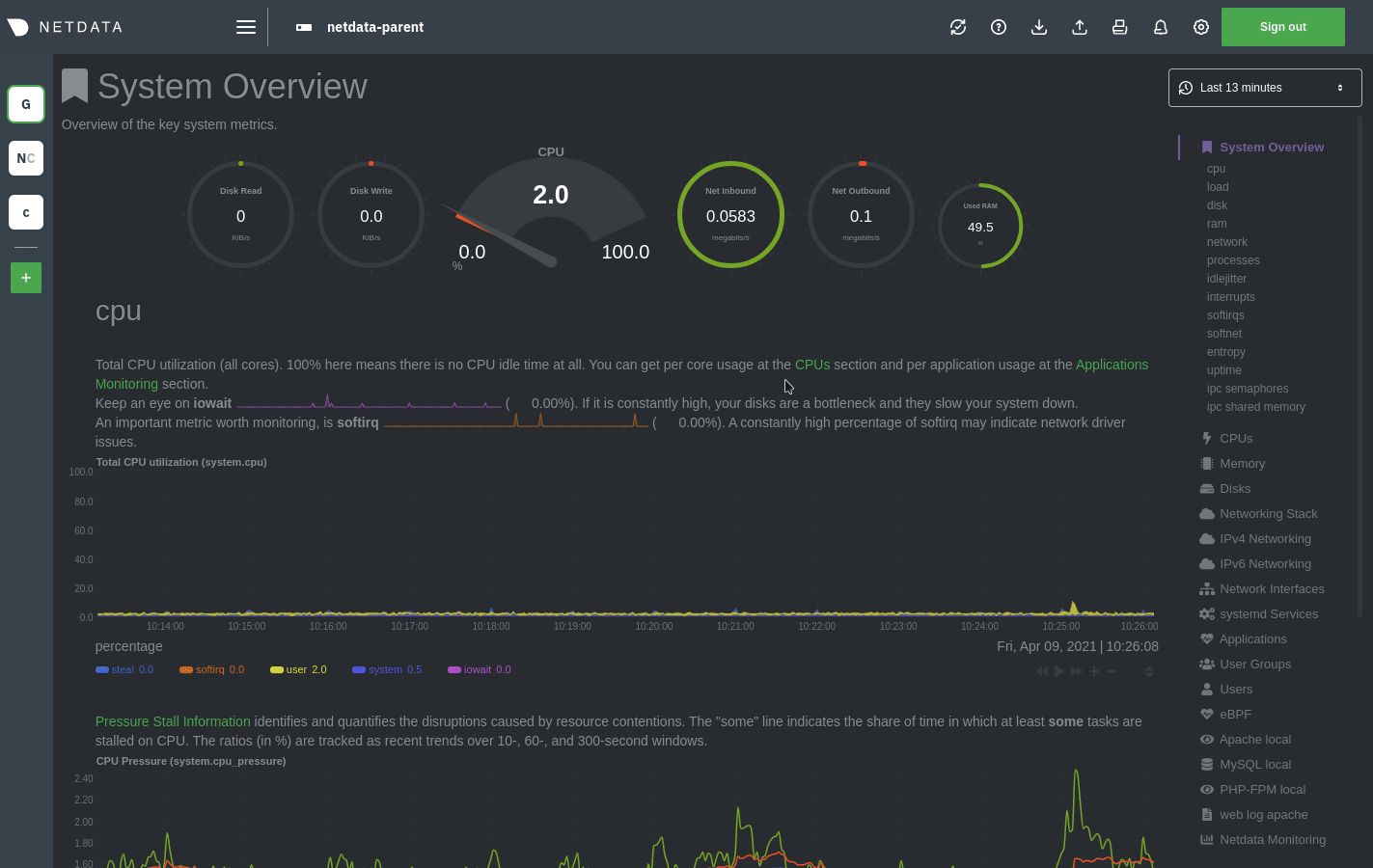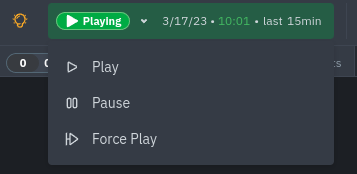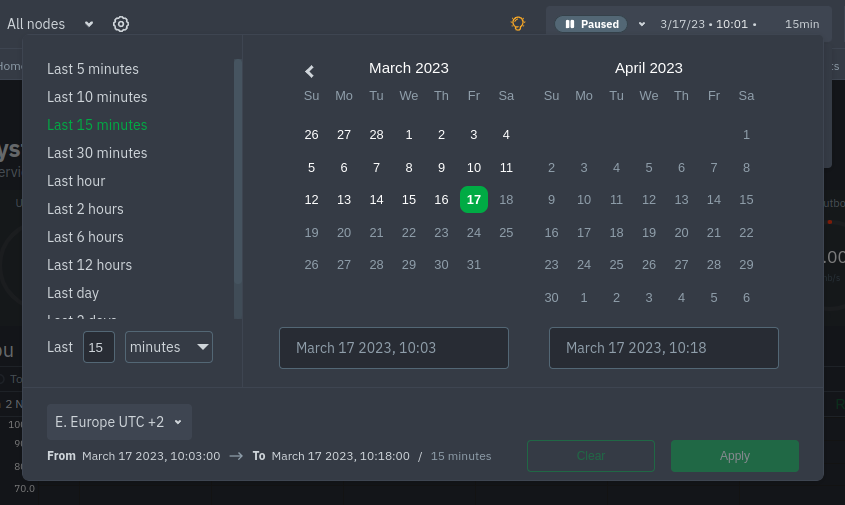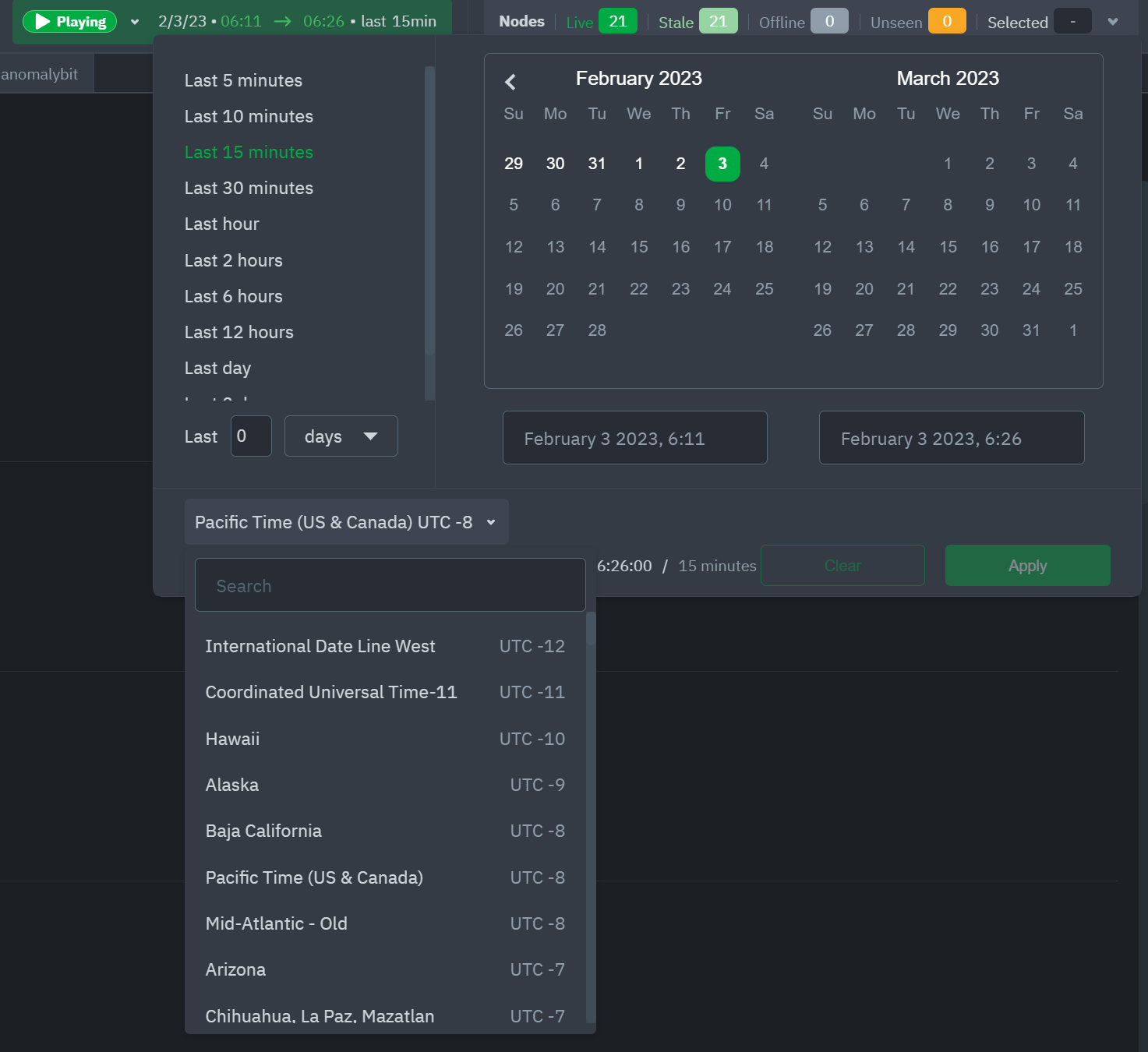diff options
| author | Daniel Baumann <daniel.baumann@progress-linux.org> | 2024-07-24 09:54:23 +0000 |
|---|---|---|
| committer | Daniel Baumann <daniel.baumann@progress-linux.org> | 2024-07-24 09:54:44 +0000 |
| commit | 836b47cb7e99a977c5a23b059ca1d0b5065d310e (patch) | |
| tree | 1604da8f482d02effa033c94a84be42bc0c848c3 /docs/dashboard | |
| parent | Releasing debian version 1.44.3-2. (diff) | |
| download | netdata-836b47cb7e99a977c5a23b059ca1d0b5065d310e.tar.xz netdata-836b47cb7e99a977c5a23b059ca1d0b5065d310e.zip | |
Merging upstream version 1.46.3.
Signed-off-by: Daniel Baumann <daniel.baumann@progress-linux.org>
Diffstat (limited to 'docs/dashboard')
| -rw-r--r-- | docs/dashboard/customize.md | 76 | ||||
| -rw-r--r-- | docs/dashboard/import-export-print-snapshot.md | 74 | ||||
| -rw-r--r-- | docs/dashboard/visualization-date-and-time-controls.md | 92 |
3 files changed, 0 insertions, 242 deletions
diff --git a/docs/dashboard/customize.md b/docs/dashboard/customize.md deleted file mode 100644 index 301f0bd6b..000000000 --- a/docs/dashboard/customize.md +++ /dev/null @@ -1,76 +0,0 @@ -# Customize the standard dashboard - -> ### Disclaimer -> -> This document is only applicable to the v1 version of the dashboard and doesn't affect the [Netdata Dashboard](https://github.com/netdata/netdata/blob/master/docs/category-overview-pages/accessing-netdata-dashboards.md). - -While the [Netdata dashboard](https://github.com/netdata/netdata/blob/master/web/gui/README.md) comes preconfigured with hundreds of charts and -thousands of metrics, you may want to alter your experience based on a particular use case or preferences. - -## Dashboard settings - -To change dashboard settings, click the on the **settings** icon - -in the top panel. - -These settings only affect how the dashboard behaves in your browser. They take effect immediately and are permanently -saved to browser local storage (except the refresh on focus / always option). Some settings are applied immediately, and -others are only reflected after the dashboard is refreshed, which happens automatically. - -Here are a few popular settings: - -### Change chart legend position - -Find this setting under the **Visual** tab. By default, Netdata places the -[legend of dimensions](https://github.com/netdata/netdata/blob/master/docs/dashboard/dimensions-contexts-families.md#dimension) _below_ charts. -Click this toggle to move the legend to the _right_ of charts. - - -### Change theme - -Find this setting under the **Visual** tab. Choose between Dark (the default) and White. - -## Customize the standard dashboard info - -Netdata stores information about individual charts in the `dashboard_info.js` file. This file includes section and -subsection headings, descriptions, colors, titles, tooltips, and other information for Netdata to render on the -dashboard. - -One common use case for customizing the standard dashboard is adding internal "documentation" a section or specific -chart that can then be read by anyone with access to that dashboard. - -For example, here is how `dashboard_info.js` defines the **System Overview** section. - -```javascript -netdataDashboard.menu = { - 'system': { - title: 'System Overview', - icon: '<i class="fas fa-bookmark"></i>', - info: 'Overview of the key system metrics.' - }, -``` - -If you want to customize this information, use the example `dashboard_info_custom_example.js` as a starting point. -First, navigate to the web server's directory. If you're on a Linux system, this should be at `/usr/share/netdata/web/`. -Copy the example file, then ensure that its permissions match the rest of the web server, which is `netdata:netdata` by -default. - -```bash -cd /usr/share/netdata/web/ -sudo cp dashboard_info_custom_example.js your_dashboard_info_file.js -sudo chown netdata:netdata your_dashboard_info_file.js -``` - -Edit the file with customizations to the `title`, `icon`, and `info` fields. Replace the string after `fas fa-` with any -icon from [Font Awesome](https://fontawesome.com/cheatsheet) to customize the icons that appear throughout the -dashboard. - -Save the file, then navigate to your [Netdata config directory](https://github.com/netdata/netdata/blob/master/docs/configure/nodes.md) to edit `netdata.conf`. Add -the following line to the `[web]` section to tell Netdata where to find your custom configuration. - -```conf -[web] - custom dashboard_info.js = your_dashboard_info_file.js -``` - -Reload your browser tab to see your custom configuration.
\ No newline at end of file diff --git a/docs/dashboard/import-export-print-snapshot.md b/docs/dashboard/import-export-print-snapshot.md deleted file mode 100644 index 5a05f51ec..000000000 --- a/docs/dashboard/import-export-print-snapshot.md +++ /dev/null @@ -1,74 +0,0 @@ -<!-- -title: "Import, export, and print a snapshot" -description: >- - "Snapshots can be incredibly useful for diagnosing anomalies after - they've already happened, and are interoperable with any other node - running Netdata." -type: "how-to" -custom_edit_url: "https://github.com/netdata/netdata/blob/master/docs/dashboard/import-export-print-snapshot.md" -sidebar_label: "Import, export, and print a snapshot" -learn_status: "Published" -learn_topic_type: "Tasks" -learn_rel_path: "Operations" ---> - -# Import, export, and print a snapshot - -Netdata can export snapshots of the contents of your dashboard at a given time, which you can then import into any other -node running Netdata. Or, you can create a print-ready version of your dashboard to save to PDF or actually print to -paper. - -Snapshots can be incredibly useful for diagnosing anomalies after they've already happened. Let's say Netdata triggered a warning alert while you were asleep. In the morning, you can [select the -timeframe](https://github.com/netdata/netdata/blob/master/docs/dashboard/visualization-date-and-time-controls.md) when the alert triggered, export a snapshot, and send it to a - -colleague for further analysis. - -Or, send the Netdata team a snapshot of your dashboard when [filing a bug -report](https://github.com/netdata/netdata/issues/new?assignees=&labels=bug%2Cneeds+triage&template=BUG_REPORT.yml) on -GitHub. - - - -## Import a snapshot - -To import a snapshot, click on the **import** icon  -in the top panel. - -Select the Netdata snapshot file to import. Once the file is loaded, the modal updates with information about the -snapshot and the system from which it was taken. Click **Import** to begin to process. - -Netdata takes the data embedded inside the snapshot and re-creates a static replica on your dashboard. When the import -finishes, you're free to move around and examine the charts. - -Some caveats and tips to keep in mind: - -- Only metrics in the export timeframe are available to you. If you zoom out or pan through time, you'll see the - beginning and end of the snapshot. -- Charts won't update with new information, as you're looking at a static replica, not the live dashboard. -- The import is only temporary. Reload your browser tab to return to your node's real-time dashboard. - -## Export a snapshot - -To export a snapshot, first pan/zoom any chart to an appropriate _visible timeframe_. The export snapshot will only -contain the metrics you see in charts, so choose the most relevant timeframe. - -Next, click on the **export** icon  -in the top panel. - -Select the metrics resolution to export. The default is 1-second, equal to how often Netdata collects and stores -metrics. Lowering the resolution will reduce the number of data points, and thus the snapshot's overall size. - -Edit the snapshot file name and select your desired compression method. Click on **Export**. When the export is -complete, your browser will prompt you to save the `.snapshot` file to your machine. - -## Print a snapshot - -To print a snapshot, click on the **print** icon  -in the top panel. - -When you click **Print**, Netdata opens a new window to render every chart. This might take some time. When finished, -Netdata opens a browser print dialog for you to save to PDF or print. diff --git a/docs/dashboard/visualization-date-and-time-controls.md b/docs/dashboard/visualization-date-and-time-controls.md deleted file mode 100644 index 99e4c308e..000000000 --- a/docs/dashboard/visualization-date-and-time-controls.md +++ /dev/null @@ -1,92 +0,0 @@ -# Visualization date and time controls - -Netdata's dashboard features powerful date visualization controls that include a time control, a timezone selector and a rich date and timeframe selector. - -The controls come with useful defaults and rich customization, to help you narrow your focus when troubleshooting issues or anomalies. - -## Time controls - -The time control provides you the following options: **Play**, **Pause** and **Force Play**. - -- **Play** - the content of the page will be automatically refreshed while this is in the foreground -- **Pause** - the content of the page isn't refreshed due to a manual request to pause it or, for example, when your investigating data on a chart (cursor is on top of a chart) -- **Force Play** - the content of the page will be automatically refreshed even if this is in the background - -With this, we aim to bring more clarity and allow you to distinguish if the content you are looking at is live or historical and also allow you to always refresh the content of the page when the tabs are in the background. - -Main use cases for **Force Play**: - -- You use a terminal or deployment tools to do changes in your infra and want to see the effect immediately, Netdata is in the background, displaying the impact of these changes -- You want to have Netdata on the background, example displayed on a TV, to constantly see metrics through dashboards or to watch the alert status - - - -## Date and time selector - -The date and time selector allows you to change the visible timeframe and change the timezone used in the interface. - -### Pick timeframes to visualize - -While [panning through time and zooming in/out](https://github.com/netdata/netdata/blob/master/docs/cloud/visualize/interact-new-charts.md) from charts it is helpful when you're looking a recent history, or want to do granular troubleshooting, what if you want to see metrics from 6 hours ago? Or 6 days? - -Netdata's dashboard features a **timeframe selector** to help you visualize specific timeframes in a few helpful ways. -By default, it shows a certain number of minutes of historical metrics based on the your browser's viewport to ensure it's always showing per-second granularity. - -#### Open the timeframe selector - -To visualize a new timeframe, you need to open the picker, which appears just above the menu, near the top-right bar of the dashboard. - - - -The **Clear** button resets the dashboard back to its default state based on your browser viewport, and **Apply** closes -the picker and shifts all charts to the selected timeframe. - -#### Use the pre-defined timeframes - -Click any of the following options in the predefined timeframe column to choose between: - -- Last 5 minutes -- Last 15 minutes -- Last 30 minutes -- Last hour -- Last 2 hours -- Last 6 hours -- Last 12 hours -- Last day -- Last 2 days -- Last 7 days - -Click **Apply** to see metrics from your selected timeframe. - -#### Choose a specific interval - -Beneath the predefined timeframe columns is an input field and dropdown you use in combination to select a specific timeframe of -minutes, hours, days, or months. Enter a number and choose the appropriate unit of time, then click **Apply**. - -#### Choose multiple days via the calendar - -Use the calendar to select multiple days. Click on a date to begin the timeframe selection, then an ending date. The -timeframe begins at noon on the beginning and end dates. Click **Apply** to see your selected multi-day timeframe. - -#### Caveats and considerations - -**Longer timeframes will decrease metrics granularity**. At the default timeframe, based on your browser viewport, each -"tick" on charts represents one second. If you select a timeframe of 6 hours, each tick represents the _average_ value -across a larger period of time. - -**You can only see metrics as far back in history as your metrics retention policy allows**. Netdata uses an internal -time-series database (TSDB) to store as many metrics as it can within a specific amount of disk space. The default -storage is 256 MiB, which should be enough for 1-3 days of historical metrics. If you navigate back to a timeframe -beyond stored historical metrics, you'll see this message: - - - -At any time, [configure the internal TSDB's storage capacity](https://github.com/netdata/netdata/blob/master/docs/store/change-metrics-storage.md) to expand your -depth of historical metrics. - -### Timezone selector - -The default timezone used in all date and time fields in Netdata Cloud comes from your browser. To change it, open the -date and time selector and use the control displayed here: - - |
